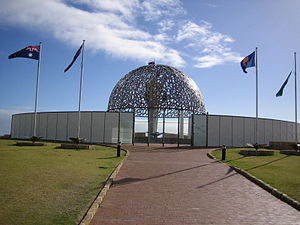The voice of new Bulgaria resonates throughout the artist enclave of Plovdiv
SLIGHTLY moody but charismatic, with a hint of melancholy, Plovdiv left a deep impression as I walked past its graffiti-covered walls and timeworn architecture.
On the surface, this central Bulgarian city can pass off as any other Western European town with its cobblestone paths, churches and Roman ruins. But underneath Plovdiv's skin is a city of contrasts - edgy urbanites in spunky outfits living amid grim communist-era buildings.
A former Eastern Bloc nation, Bulgaria has had its fair share of political battles and communist governance. For decades, its citizens were told how to lead their lives. Today, a young generation of Bulgarians are breaking out of the mould; expressing themselves through contemporary art and music - and they have chosen Plovdiv as their stage.
So long, drab world
Transforming from a historic city to a vibrant, progressive art enclave, Plovdiv seems to have skipped decades to be where it is today. Art student Silvina Burdzhieva, however, has a different perspective: "Plovdiv hasn't changed much. It is us, the people, who have changed."
The proof is in the city, which has retained its air of nonchalance even as its inhabitants speak passionately about a brave new world.
Burdzhieva said: "Art allows us to freely express our thoughts and emotions. We have come a long way and I'd like to think that art has helped us to advance and progress."
She's not alone in her enthusiasm.
"Contemporary art is very hip at the moment. Plovdiv is now on the wave of popularity, and if we continue doing what we do best, we can be at the forefront of art, like the rest of Europe," said Burdzhieva's partner Stanimir Vrachev, who is a professional photographer.
We hiked up the cobblestone slopes of Plovdiv's historic centre to the peak of the Hill of the Liberators.
From here, the view is of hills, ruins and outdoor cafes. As the second largest city in Bulgaria, Plovdiv is surprisingly compact. Yet, even with a population of some 380,000, it has, in addition to its numerous art galleries, a centre for contemporary art. Housed in an ancient Roman bath, the centre promotes various forms of modern expression. This summer, the focus is on the performing arts.
Pushing boundaries is "not so scary"
Snaking past teahouses and boutiques, Otets Paisiy Street soon revealed that it too could be a venue for art. Larger-than-life photos of the street shot during the '60s were spread tastefully on its chiselled walls. According to Burdzhieva and Vrachev, this was part of the preparations for the Otets Paisiy Street Festival.
At the end of the road is the couple's favourite hangout, a stylish and minimalist bar cum art gallery aptly named Art News Cafe. The news aspect is neatly contained in the cafe's rows of catalogues, magazines and books on contemporary art. A newsletter produced by the cafe details events in the art world.
Owners Katherine and Vesselina Sarieva are the pushing force behind Plovdiv's emerging art scene, having organised several events here as well as the Otets Paisiy Weekend Festival.
Despite bureaucratic obstacles, they have succeeded in setting up a popular arts centre. In their words: "Contemporary art is not so scary and it does not hurt."
At the cafe's outdoor patio, we were joined by Burdzhieva's friends - several photographers, a philosopher and a sculptor who left her hometown of Sofia for Plovdiv. She said: "I like the liberal and free-thinking vibes in Plovdiv, it's very different from Sofia. Contemporary art is about being yourself, and I can only completely express myself here."
Comfort zone? What's that?
The next day, the street festival was in full swing by noon. Music performances and graffiti demonstrations drew revellers and curious passers-by to the thoroughfare.
At Dzhumaya Dzhamiya square, a literary flash-mob gathered to read aloud simultaneously. In another area, professional modern dancers Ana Salazar and Monika Pungerovs sashayed around blindfolded, touching street poles and caressing the faces of the audience.
We passed awestruck spectators to get to the Sariev Gallery, founded by the Sarieva sisters to give artistic expression free rein. There, a performance artist stood behind a white screen with nothing but his face and private part - painted in gold - on display. Titled 24 Carat Art, the audacious act featured Emil Mirazchiev, a symbolic figure in the Bulgarian contemporary art scene.
As night crept in, street artists lit up the dark with twirling balls of fire. The crowd roared in awe; I cheered too - not only for the fire dancers - but for the thriving art scene that makes Plovdiv a thrilling place to be.
Trip notes
Go: The gateway to Bulgaria is its capital, Sofia. Lufthansa, Air France, KLM and British Airways fly from Singapore to Sofia with one stopover. From Sofia, there are regular buses to Plovdiv. The ride is two hours. The best time to go is spring (April to June) and autumn (Sept to Oct), when temperatures are pleasant. Summer is a popular time to visit as Plovdiv's International Music Festival is held every May to July.
Stay: Bulgaria is becoming a noteworthy travel destination as it is a less expensive alternative to its Western European neighbours. The currency used is Bulgarian lev, which is similar in value to the Singapore dollar. A restaurant meal costs about $10; lodging ranges from $10 for a dorm bed (Hiker's Hostel) to $100 per night for a luxury hotel room (Trimontium Hotel).
Find:
- www.artnewscafe.com
- www.sariev-gallery.com
From TODAY, Travel; source article is below:
Fired up in Bulgaria
-----
















































